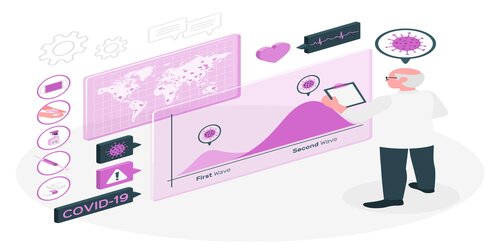


The healthcare industry is undergoing a transformation, driven by the integration of artificial intelligence and advanced visualization tools.
The healthcare industry is undergoing a transformation, driven by the integration of artificial intelligence and advanced visualization tools. AI data visualization in healthcare turns complex datasets into clear, actionable insights, enabling providers to enhance patient care, streamline operations, and improve outcomes in unprecedented ways.
Unlocking Insights from Complex Data
Hospitals and clinics generate massive volumes of data daily, including electronic medical records, imaging results, and wearable device metrics. AI excels at analyzing this information to uncover patterns and predict outcomes. However, raw data can overwhelm clinicians. Visualization tools powered by AI present these insights through intuitive charts, graphs, and dashboards. For example, AI can highlight irregularities in patient vitals or flag potential risks, enabling quicker and more accurate diagnoses without drowning doctors in numbers.
Enhancing Clinical Decision-Making
Real-time, user-friendly visuals are critical for effective clinical decisions. In high-pressure settings like emergency rooms, AI-driven tools display vital metrics—such as heart rate trends or infection risk scores—on dynamic dashboards. These visuals allow physicians to act swiftly, reducing response times and boosting patient survival rates. Predictive models further enhance AI data visualization in healthcare, identifying patients at risk of conditions like diabetes or cardiovascular disease, enabling proactive interventions before symptoms worsen.
Personalizing Patient Care
Personalized medicine relies on tailored insights, and AI-powered visualizations deliver just that. By processing patient histories, genetic profiles, and lifestyle data, AI generates customized visual reports to guide treatment plans. For instance, oncologists use AI-created heatmaps to visualize tumor growth patterns, improving the precision of radiation therapy. Patients also benefit, as simplified visual summaries of their health data—accessible via apps or portals—empower them to manage chronic conditions like hypertension or asthma more effectively, fostering greater engagement.
Streamlining Healthcare Operations
AI-driven visualizations extend beyond clinical care to optimize hospital operations. Interactive dashboards track metrics like bed occupancy, staff schedules, and equipment usage, presenting them in clear, real-time formats. This helps administrators identify inefficiencies, such as prolonged patient wait times, and allocate resources effectively. During public health crises, like flu outbreaks, AI-generated maps can visualize infection trends across regions, guiding vaccine distribution and staffing decisions to maximize impact.
Challenges and Future Potential
Despite its promise, adopting AI-powered visualization tools faces hurdles like ensuring data privacy, achieving system interoperability, and training clinicians to use these technologies effectively. Compliance with regulations like HIPAA and seamless integration of diverse data sources are essential for success. Looking forward, advancements in AI, such as natural language processing and augmented reality, will enable even more sophisticated visualizations, like 3D models for surgical planning, further revolutionizing care delivery.
Conclusion
AI data visualization in healthcare is reshaping how providers deliver care by making complex data accessible and actionable. From improving diagnostics to optimizing operations, these tools drive efficiency and patient-centered care. As technology advances, AI-powered visualizations will continue to transform healthcare, paving the way for a more proactive and personalized future.
